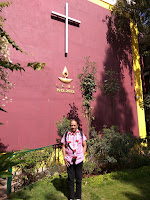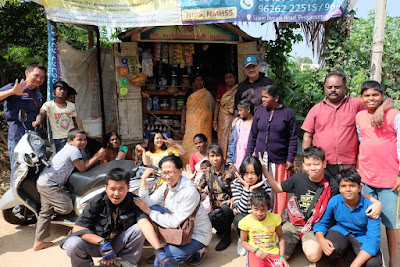Dalit Theology: The Form of Love to Others (South to South Exchange Program to SCM India)
Friday, 29 December 2017by adminstube
Dalit theology is a long struggle of church in India after observing the structured poverty that is very difficult to be penetrated because it is integrated in religious teachings. Many parties feel uncomfortable with the birth of Dalit Theology because of the anxiety that it will overthrow religious teachings that have become rigid doctrines even absolute doctrine. As we all know that culture and religion are united, even unseparable as "Hinduism is India and India is Hinduism". And for me, Dalit Theology is Theology in Loco or Local Dalit Christian which is revolutionary and it isdone through an awareness process. Dalit theology is different from Liberation theology in Latin America with its frontal method, fighting with all ways to overthrow injustice ruler or system.
Dalit theology is inspired by the arrival of Christian missions coming to India such as Portuguese, Dutch, especially Britain. Although they colonized India, their church role was greatly feltthrough out India, especially their diakonia services covering schools, hospitals and orphanages,moreover the presence of mother Theresa in Calcutta. The basic thought of Dalit Theology is taken from Luke 4: 18-19, saying "The Spirit of the Lord is upon me, because he hath anointed me to preach the gospel to the poor; he hath sent me to heal the brokenhearted, to preach deliverance to the captives, and recovering of sight to the blind, to set at liberty them that are bruised, 19 To preach the acceptable year of the Lord.”
 The results and fruit of Dalit Theology are perceived by Indian indemocracy, the increase of rightequality, the success of lower class in education and became agents of change to lead to more developed society. One real evidence of Dalit Theology is SCMI.
The results and fruit of Dalit Theology are perceived by Indian indemocracy, the increase of rightequality, the success of lower class in education and became agents of change to lead to more developed society. One real evidence of Dalit Theology is SCMI.About 40 years ago there was also a theology in Indonesia that was identical with Dalit Theology. It was called Balance Theology, based on 2 Corinthians 8: 11-15 which reads, "11 Now therefore perform the doing of it; that as there was a readiness to will, so there may be a performance also out of that which ye have. 12 For if there be first a willing mind, it is accepted according to that a man hath, and not according to that he hath not. 13 For I mean not that other men be eased, and ye burdened: 14 But by an equality, that now at this time your abundance may be a supply for their want, that their abundance also may be a supply for your want: that there may be equality: 15 As it is written, He that had gathered much had nothing over; and he that had gathered little had no lack.”
At last, Greetings of love and peace for India. (Bambang Sumbodo).
Web Archive
2024 (6) 2013 (20)
2012 (12)
2011 (2)
2010 (18)
Total: 449
